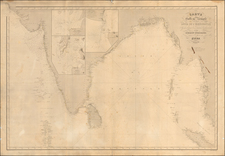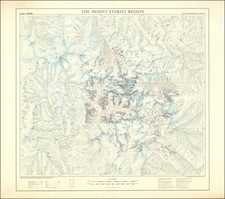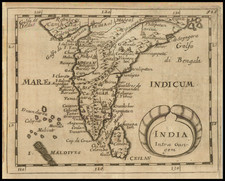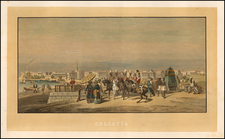Fine early engraved view of the 16th Century Portuguese fortress and fortrified town on the island of Diu in Southwest India, from Daniel Meisner "Sciographia Cosmica," printed 1638 in Nuremberg.
Diu is a small island off the southern coast of Gujarat's Kathiawar peninsula, at the mouth of the Gulf of Khambhat. Historically part of the Saurashtra region of Gujarat, Diu was an important port on the Arabian Sea trade routes of the Indian Ocean. This strategic significance made it a focal point of several historical conflicts.
In the Battle of Diu in 1509, Portugal clashed with a combined force of Mamluks, Venetians, the Ragusians, the Zamorin of Calicut, and the Sultan of Gujarat, Mahmud Begada. The Portuguese, despite several initial failed attempts to establish an outpost in Diu during the early 16th century, eventually succeeded in forging a defensive alliance with Bahadur Shah, the Sultan of Gujarat, in 1535. This alliance, aimed against the Mughal emperor Humayun, allowed the Portuguese to construct the Diu Fort and maintain a garrison on the island.
However, this alliance was short-lived. Between 1537 and 1546, the Sultans' attempts to oust the Portuguese from Diu were unsuccessful. Bahadur Shah himself tried to reclaim Diu but was defeated and killed by the Portuguese. This led to a period of conflict between the Portuguese and the people of Gujarat. In 1538, and again in 1546, Diu faced sieges. The first was led by Coja Sofar, Lord of Cambay, and Ottoman Suleiman Pasha, and the second solely by Coja Sofar. Both sieges were repelled by the Portuguese, under the leadership of Anthony Silveira and D. João de Castro. The fortress, strengthened by Dom João de Castro following the 1545 siege, proved formidable against later attacks, including those by the Arabs of Muscat and the Dutch in the late 17th century.









![[Tiruchirappalli] 1763 Plan de Trichenapaly](https://storage.googleapis.com/raremaps/img/small/58955.jpg)




